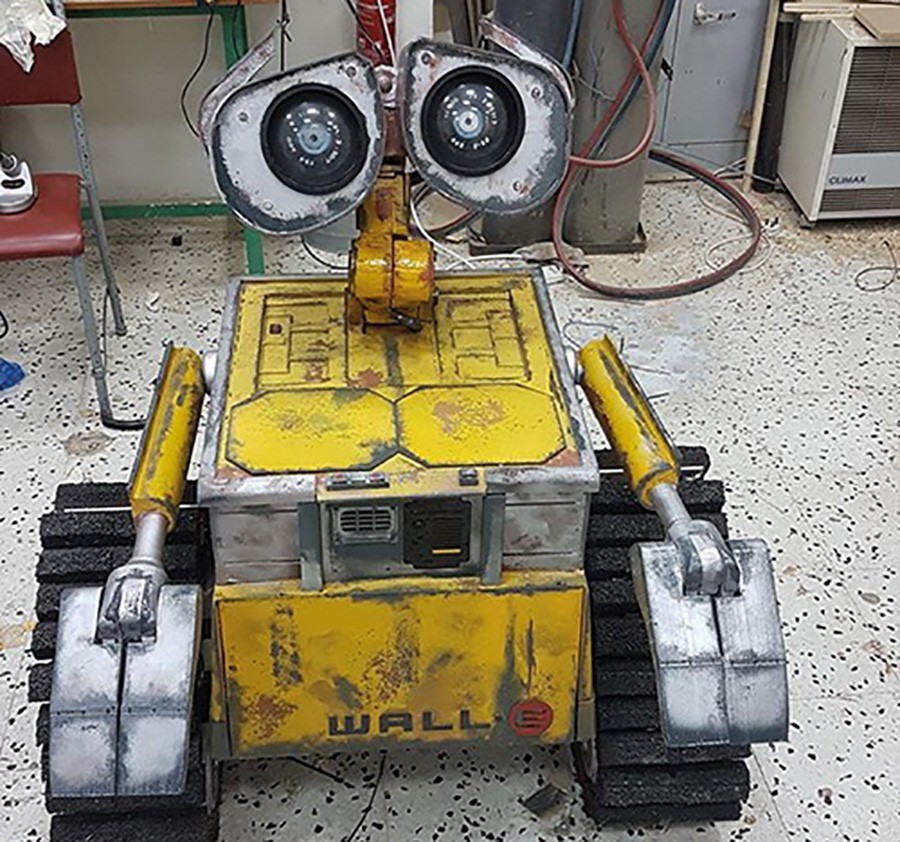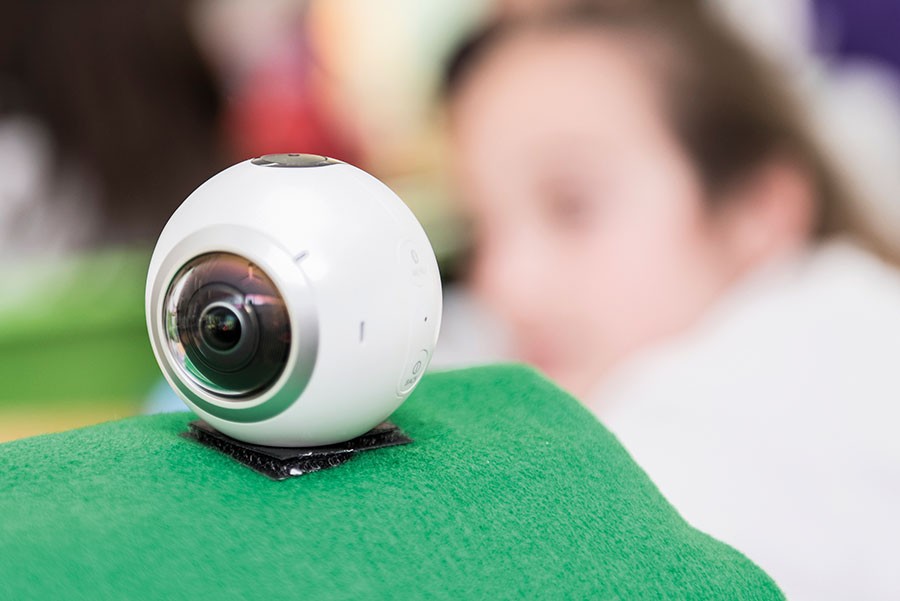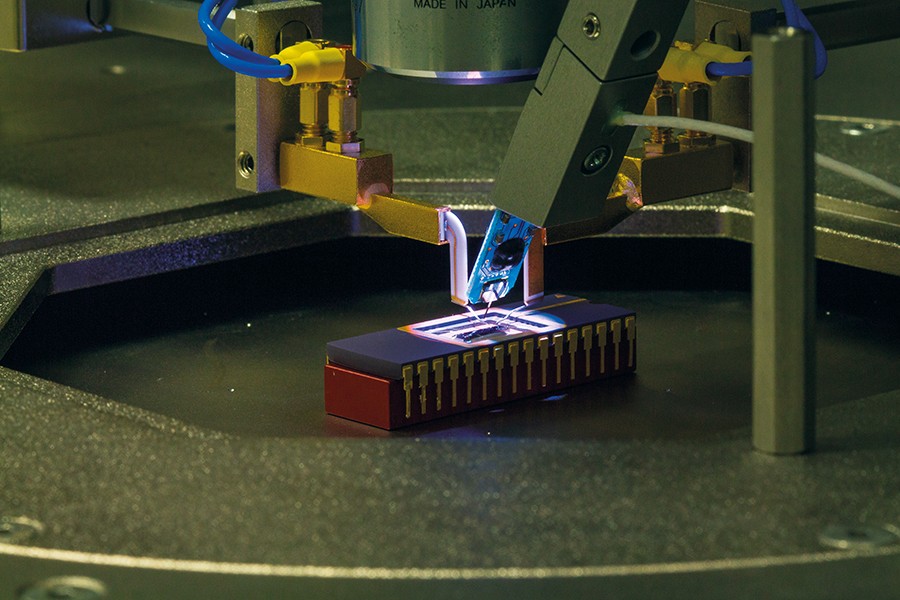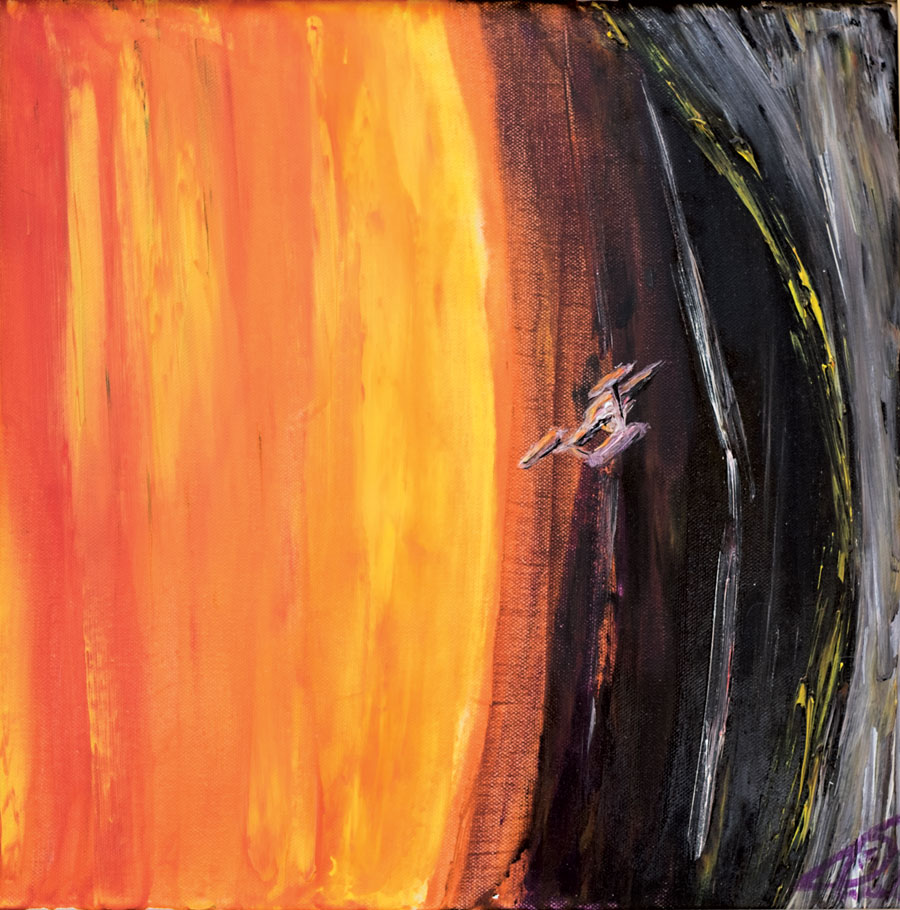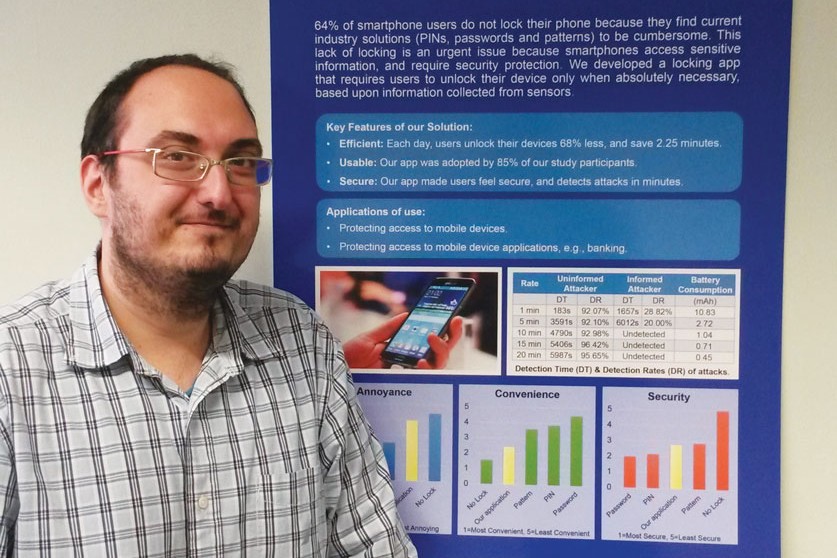Think sci-fi, think robots. Whether benevolent, benign, or bloodthirsty, these artificially-intelligent automatons have long captured our imagination. However, thanks to recent advances in mechanical and programming technology, it looks like they are set to break the bonds of fiction.Continue reading
Through the VR glass
As societies evolve and take in a greater number of distinct cultures, histories, and traditions, the ability to empathise with each other becomes vital, for all our sakes. In an effort to get as close as possible to seeing life through another’s eyes, researchers from the University of Malta are creating a virtual reality experience that allows users to step into someone else’s shoes.
Words by Dr Vanessa Camilleri.
From a young age we are often taught that if we want to understand someone else’s perspective, we must first walk a mile in their shoes. This ability to place ourselves in another’s position is what we call empathy. This component of emotional intelligence is known to increase prosocial behaviour and reduce individualistic traits, meaning that it can lead to a better quality of life where practiced, whether at home, in the workplace, or any other environment.
Where is the crowd?
Athletes who are cheered on during sporting activities are likely to perform better than athletes who don’t. The HeartLink project is investigating how to remotely cheer athletes while they are participating in sporting events. Dr Franco Curmi writes about his work for the HeartLink project.
Continue readingTesting MEMS
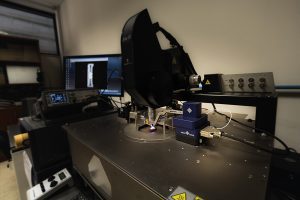 How do you test the sensors in smartphones, smartwatches, and up-and-coming medical devices? With a Femtotools FT-RS1002 Microrobotic System of course! In 2016 the Department of Microelectronics and Nanoelectronics (Faculty of ICT, UoM) set up a slew of devices to be able to to probe, prod and poke devices up to a resolution of 1 nm (thinner than the diameter of a human hair).
How do you test the sensors in smartphones, smartwatches, and up-and-coming medical devices? With a Femtotools FT-RS1002 Microrobotic System of course! In 2016 the Department of Microelectronics and Nanoelectronics (Faculty of ICT, UoM) set up a slew of devices to be able to to probe, prod and poke devices up to a resolution of 1 nm (thinner than the diameter of a human hair).
| Quick Specs |
|
Number of axes: 3 Maximum velocity: 5 mm/s Minimum motion increment: 1 nm Actuation principle: Piezoelectric scanning/stepping Sensor probe tip area: 50 µm x 50 µm FT-S100000 sensor force range: ±100000 µN FT-S100000 sensor resolution at 10Hz: ±5 µN Operating temperature: 5°C to 100°C |
The team of computer scientists collaborated with global semiconductor chip maker ST Microelectronics to p roduce MEMS (Micro-Electro-Mechanical Systems). MEMS are the tiny sensors or devices often found in smartphones that allow them to act like a compass, know how fast a person is going, or detect sound. In Malta, the new equipment is being used to measure mechanical properties (for example shear testing and flexure testing) of tiny mirrors that can be used to turn phones into high-quality projectors (part of the Lab4MEMS2 project part-funded by the EU). This toolkit is incredibly versatile, forming part of a station that can have additional add-ons to widen its applications. Now the team wants to buy more sensitive microforce probes and microgrippers that will allo w the manipulation and assembly of microsystems. This toolkit’s micromechanical testing can be used in many research and industrial applications. This way, the horizon is open for studies into semiconductor technology, microsystem development, materials science, micromedicine, or biotechnology—placing Malta on the semiconductor map.
Meet the research team
Prof. Ing. Edward Gatt & Dr Ing. Owen Casha – Faculty of ICT
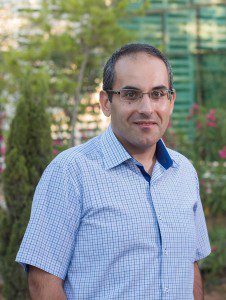
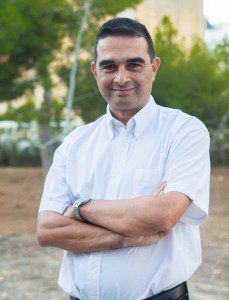 Physicist Dr Giacinto De Cataldo (Head of the HMPID detector) got in touch with Gatt and Casha to work on two microelectronics projects for CERN. Their first project was the O2 Project—a series of upgrades for the ALICE experiment. One of upgrades focuses on improving the Ring-Imaging Cherenkov detector (RICH), found in the HMPID detector, a device that identifies the type of electrically charged particles being emitted by the detector. The second project is the implementation of a Remotely Configurable L0 Trigger Fan-out Module for the ALICE Detector. It involves the clocking management of the ALICE detector with high precision. This research could also be used in consumer telecommunication systems, improving radio frequency circuits’ performance. Finally, Gatt is researching how to improve chip designs used to detect physical phenomena from particle collisions with the aim of making them more intelligent and power-efficient.
Physicist Dr Giacinto De Cataldo (Head of the HMPID detector) got in touch with Gatt and Casha to work on two microelectronics projects for CERN. Their first project was the O2 Project—a series of upgrades for the ALICE experiment. One of upgrades focuses on improving the Ring-Imaging Cherenkov detector (RICH), found in the HMPID detector, a device that identifies the type of electrically charged particles being emitted by the detector. The second project is the implementation of a Remotely Configurable L0 Trigger Fan-out Module for the ALICE Detector. It involves the clocking management of the ALICE detector with high precision. This research could also be used in consumer telecommunication systems, improving radio frequency circuits’ performance. Finally, Gatt is researching how to improve chip designs used to detect physical phenomena from particle collisions with the aim of making them more intelligent and power-efficient.
Kevin Napoli – Computing CERN Openlab Student
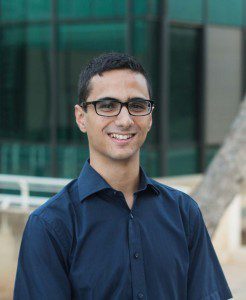 “My summer experience at CERN was remarkable. The sharing of knowledge among students and researchers was the highlight of the trip. During the openlab programme we attended lectures about security, machine learning, computer hardware, software optimisation and lots more, many of which are topics not covered at our home university. We also played a role in the ALICE experiment and I worked on my project alongside top notch computer scientists. Another positive aspect of the programme were the various trips to companies and universities in Switzerland. Being able to say that I have worked at CERN is something I will value throughout my career.”
“My summer experience at CERN was remarkable. The sharing of knowledge among students and researchers was the highlight of the trip. During the openlab programme we attended lectures about security, machine learning, computer hardware, software optimisation and lots more, many of which are topics not covered at our home university. We also played a role in the ALICE experiment and I worked on my project alongside top notch computer scientists. Another positive aspect of the programme were the various trips to companies and universities in Switzerland. Being able to say that I have worked at CERN is something I will value throughout my career.”
Julia Vella – Physics CERN Summer Student
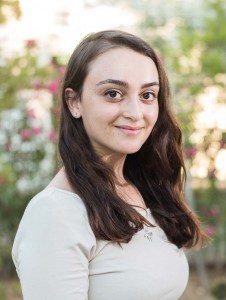 ʻThe months spent at CERN for the summer student internship programme were not only an invaluable experience, but also an insight to future potential careers for my colleagues and I. Based within the HMPID detector of the ALICE experiment, we had a six-week lecture program focused on the fundamental properties of nature. The bulk of the work we were involved in centred on implementing programming languages to process raw data from collisions into useful knowledge. Geneva provided a change of pace for us that was conducive to both hard work and extra curricular activities. Travelling across borders, visiting main projects and control centres at CERN, while also socialising with students from all over the globe, made it an all-encompassing experience not easily matched.ʼ
ʻThe months spent at CERN for the summer student internship programme were not only an invaluable experience, but also an insight to future potential careers for my colleagues and I. Based within the HMPID detector of the ALICE experiment, we had a six-week lecture program focused on the fundamental properties of nature. The bulk of the work we were involved in centred on implementing programming languages to process raw data from collisions into useful knowledge. Geneva provided a change of pace for us that was conducive to both hard work and extra curricular activities. Travelling across borders, visiting main projects and control centres at CERN, while also socialising with students from all over the globe, made it an all-encompassing experience not easily matched.ʼ
Josef Magri – M.Sc. Student
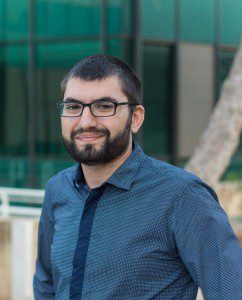 The HMPID takes snapshots of the faint patterns generated by the high-energy collisions, passing this information through the RICH electronics module which cleans and transforms it for analysis. Magri is working to optimise the electronic circuits and control boards to improve how data is handled. So far, he has manipulated computer processes to create parallelism, allowing for processes that previously happened one after the other to occur simultaneously. He also used high-throughput interconnects, which, when coupled with parallelism, are expected to increase data collection tenfold. Magri’s work will be combined with that of other researchers and integrated by 2020 in order to improve the detector’s accuracy, potentially revealing building blocks of matter that might have yet to be seen.
The HMPID takes snapshots of the faint patterns generated by the high-energy collisions, passing this information through the RICH electronics module which cleans and transforms it for analysis. Magri is working to optimise the electronic circuits and control boards to improve how data is handled. So far, he has manipulated computer processes to create parallelism, allowing for processes that previously happened one after the other to occur simultaneously. He also used high-throughput interconnects, which, when coupled with parallelism, are expected to increase data collection tenfold. Magri’s work will be combined with that of other researchers and integrated by 2020 in order to improve the detector’s accuracy, potentially revealing building blocks of matter that might have yet to be seen.
Clive Seguna – Ph.D. student
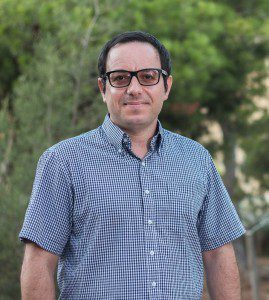 Working in close collaboration with Magri, Seguna is developing novel electronic circuitry for the CPV and HMPID detectors, that will boost the speed at which collisions are read, going from 4 kHz to 50 kHz, the speed at which the beams interact: true real time. Seguna’s research will be taken on at CERN between 2020–2023.
Working in close collaboration with Magri, Seguna is developing novel electronic circuitry for the CPV and HMPID detectors, that will boost the speed at which collisions are read, going from 4 kHz to 50 kHz, the speed at which the beams interact: true real time. Seguna’s research will be taken on at CERN between 2020–2023.
Initiating Alice
A magnificent feat of engineering, the LHC goes where no other machine has gone before.
Continue readingPolitics, policy and risky business
As a child, Prof. Noellie Brockdorff was fascinated by the robots that inhabited the world of Isaac Asimov’s novels. She wanted to know why humans are different to robots. So why are human beings not perfectly rational creatures like robots? Dr Claude Bajada finds out more.
Science, art, academia: Star Trek
The Star Trek academic symposium will be held at the Faculty of ICT, University of Malta, on 15 and 16 July 2016. This event will be a platform for both academics from various disciplines as well as Star Trek fans to meet and explore the intersection between the humanities and the sciences. There will be inspirational presentations from national and international speakers, with the programme tailored to attract a wide audience. Contributors will be encouraged to explore contemporary issues in medicine, science, and technology as well as philosophical, psychological, and sociological issues connected with the science fiction entertainment franchise Star Trek.
A similar symposium was held in 2014 and which proved to be a worldwide first that successfully drew participation from many international scholars including American philosopher Jason Eberl, UK-based neonatologist and ethicist Neena Modi.
As a result of its success, this second event that marks the 50th anniversary from the launch of Star Trek: The Original Series is being organised. The event will be held under the auspices of the Humanities, Medicine and Sciences Programme (HUMS), a University of Malta programme set up to explore and encourage the interfaces between the humanities, medicine, and sciences. The Science Fiction Symposium will appeal to scientists and fans of science fiction alike..
For more information, visit the website.

